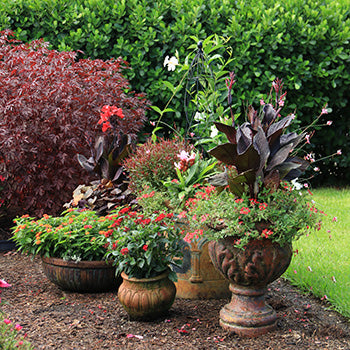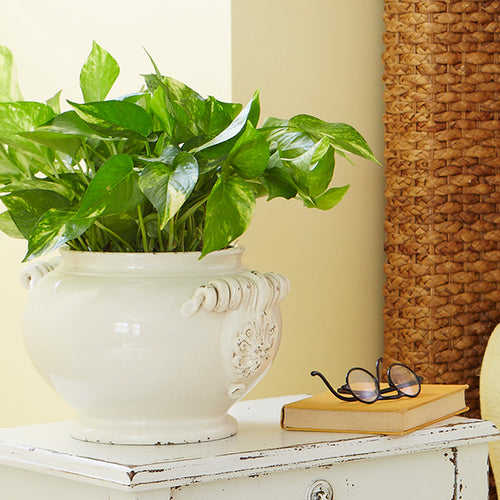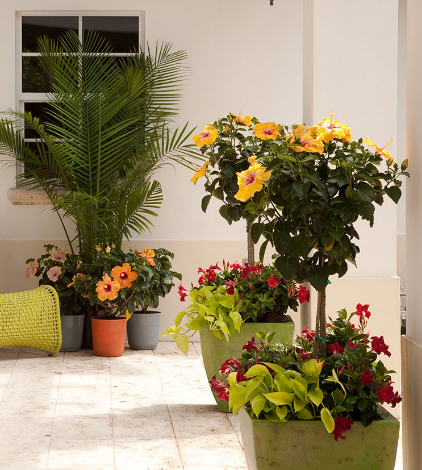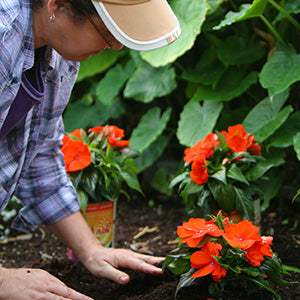It's true! Planting perennials in the fall is an easy way to enjoy a bigger, more beautiful garden the following year. While most gardeners are more accustomed to planting in spring, fall is also an ideal time to get perennials established in your garden. Here are several reasons why planting perennials in fall makes good sense.

1. Enjoy color in the fall -- and again in the spring
Buying blooming perennials in autumn means you get a seasonal two-fer. You enjoy flowering perennials in your fall garden, and again in the spring and summer (and for years to come!).
2. Fall weather is more consistent
Spring planting can be tricky. On the cold side, hard freezes and occasional snowstorms can make spring feel not so springy. On the hot side, spring weather can escalate into searing summer temps with hot, dry winds. In contrast, autumn is less emotional. Air temperatures are generally consistently warmer and the sun is less intense. These weather conditions allow plants to grow h2er.
3. Plants welcome warmer soil
In northern climates, the soil in spring is cold. But root systems flourish best in warm soil. And while the air temperature may drop in autumn, the soil temperature holds on to heat more readily than the air -- so the soil stays warm and welcoming to plant root systems.
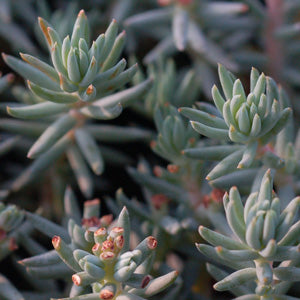
4. There’s less weed competition
If you’ve done a good job of keeping weeds at bay all summer, your fall-planted perennials won’t have to compete with any new upstarts.
5. You can garden when you have more time
Gardening season in spring is like rush hour traffic -- so much to do, so little time. Fall planting offers you a bigger window of time in the garden; planting perennials then may feel more pleasurable, less time-stressed.

6. Fall-planted perennials are like money in the bank
If you like the idea of investment, fall planting perennials is for you. Plants will be bigger and healthier in the spring -- a great return on your investment.
7. Coordinate perennials with spring-blooming bulbs
When you plant perennials and spring-flowering bulbs at the same time, you get a double dose of color next spring. Up come spring bulbs, such as daffodils and crocus, followed by perennials, such as dianthus and garden phlox.
8. Get a jump on garden design
When you plant early (in autumn), your perennials flourish faster in spring and summer. That means you will quickly be able to see the blank spots in your landscape that you can fill out with spring plants.
9. Early-blooming perennials do better when planted in fall
Late summer and fall are ideal times to plant perennials that flower in spring and early summer. When you plant in the fall, early-season bloomers have a chance to built root systems and establish vigor -- which will show up in the following year’s bloom.
Plant these SPRING-FLOWERING perennials in autumn:
Coreopsis
Salvia
Dianthus
Lysimachia
Plant these SUMMER-FLOWERING perennials in fall:
Garden Phlox
Sedum
Gaillardia
Heucherella
TIPS FOR FALL-PLANTED PERENNIALS
When planting perennials in autumn, follow these guidelines: 1) Plant before frost. Check your local area’s frost estimations and plant perennials at least 6 weeks before the first freeze.2) Don’t fertilize -- fall-planted perennials will be going into winter dormancy in their next stage of life and new growth (encouraged by feeding) will be killed when the first frost comes.
3) Avoid planting late-flowering perennials such as aster, mum, black-eyed Susan, and perennial ornamental grasses; these do best planted in spring.
4) Mulch around the base of fall-planted perennials to help them overwinter in cold climates.
5) Water well. Make sure newly planted perennials get enough moisture to develop new root growth.







